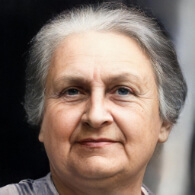Elementary Classroom (Montessori)
The Montessori Elementary Classroom caters to children between the ages of 6 to 12 years, and is set apart by its individually paced curriculum that challenges students academically and protects their sense of self[1]. This program is built on the belief that children learn best through movement and hands-on work, providing cognitive, social, and emotional support to help them reach their full potential[2].
Montessori Elementary classrooms are designed with natural lighting, soft colors, and uncluttered spaces that help establish an environment that is focused and calm. Learning materials are arranged on accessible shelves, fostering independence as students conduct their work[1].
Montessori Elementary classrooms also emphasize "society by cohesion", achieved when students form a tight-knit community, caring more for the success of the group than for individual success. Multi-age learning is a key aspect of this, with children aged 6-9 and 9-12 (or 6-12) learning together. This allows for collaboration, socialization, and peer learning, with older students serving as role models and teachers for the younger ones[2].
Montessori Quotes on Elementary Classroom
“We discovered that education is not something which the teacher does, but that it is a natural process which develops spontaneously in the human being."
— Maria Montessori
Research and Critiques on Elementary Classroom in Montessori
Pro
The Montessori Elementary Classroom encourages independent and self-paced learning, fostering a love for learning and curiosity. The multi-age classrooms promote peer learning and social development.
Cons
Critics argue that the Montessori Method may not be suitable for all children, particularly those who need more structure or who learn better through traditional methods. Montessori education can be more costly due to the specialized learning materials and the need for specially trained teachers.
Comparison to Other Methods
Unlike traditional education methods that usually separate students strictly by age and grade, the Montessori approach embraces mixed-age classrooms, allowing for varied social interactions and learning opportunities. While other progressive education models like the Waldorf approach also emphasize hands-on learning and student-led education, Montessori is distinct in its individualized learning plans and specialized learning materials.
Glossary of Montessori Terms
The Glossary of Montessori Terms is a collection of specific terms and vocabulary that are related to the Montessori method of education, primarily focusing on the theory and practice for children aged 3 to 6. The jargon used by Montessori educators offers a unique insight into child development as discussed by Maria Montessori. The 'Montepedia Glossary of Montessori Terms' originated from a glossary that was compiled by the late Annette Haines from the Montessori Training Centre of St. Louis, at the request of Molly O'Shaughnessy from the Montessori Centre of Minnesota. The reason behind the creation of this glossary was to supplement O'Shaughnessy's lecture at the Joint Annual Refresher Course that took place in Tampa, Florida, in February 2001.[3] The glossary has since been expanded and updated with additional 'Montessori Terms'.
- 3-Hour Work Cycle
- Absorbent Mind
- Adaptation
- Adolescence
- Albums
- Advisor
- Analysis of Movement
- Casa dei Bambini
- Children of the Earth
- Children's House
- Choice
- Classification
- Concentration
- Concrete to Abstract
- Control of Error
- Coordination of Movement
- Cosmic Education
- Creativity/Imagination
- Cycle of Activity
- Development of the Will
- Deviations
- Didactic Materials
- Director
- Discipline from Within
- Earth Child
- Elementary Classroom
- Erdkinder
- Exercises of Practical Life
- False Fatigue
- Freedom of Choice
- Freedom within Limits
- Grace and Courtesy
- Great Stories
- Ground Rules
- Guide
- Help from Periphery
- Human Tendencies
- Imagination
- Independence
- Indirect Preparation
- Indirect Presentation
- Isolation of a Difficulty
- Intrinsic Motivation
- Job
- Kinderhaus
- Language Appreciation
- Language Acquisition
- Learning Explosions
- Materials
- Materialised Abstractions
- Mathematical Mind
- Maximum Effort
- Mixed Ages
- Montessori Materials
- Nido
- Montessori Materials
- Normalization
- Obedience
- Peace
- Personality
- Planes of Development
- Points of Interest
- Practical Life
- Phonemic Awareness
- Phonics Instruction
- Phonological Awareness
- Prepared Environment
- Presentation
- Primary Classroom
- Psychic Embryo
- Reading Comprehension
- Repetition
- Respect
- Self-Discipline
- Self-Regulation
- Sensitive Periods
- Sensorial Materials
- Simple to Complex
- Socialization
- Society by Cohesion
- Sound Games
- Three-Hour Work Cycle
- Valorisation
- Vocabulary Enrichment
- Work
Please help to translate this page into your local language
